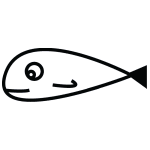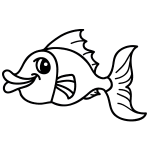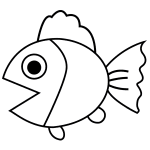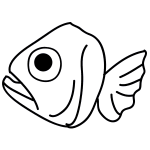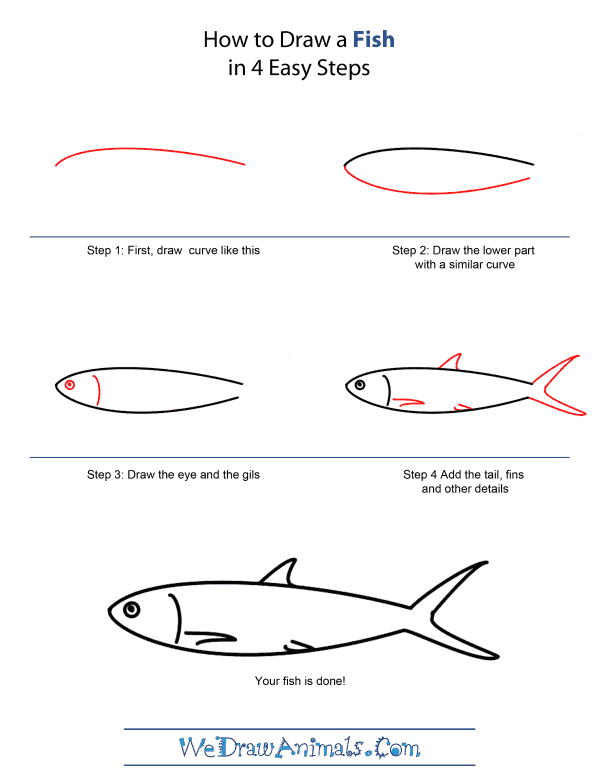In this quick tutorial you'll learn how to draw a Fish in 4 easy steps - great for kids and novice artists.
The images above represent how your finished drawing is going to look and the steps involved.
Below are the individual steps - you can click on each one for a High Resolution printable PDF version.
At the bottom you can read some interesting facts about the Fish.
Make sure you also check out any of the hundreds of drawing tutorials grouped by category.
How to Draw a Fish - Step-by-Step Tutorial
Step 1: Start with a long, curved line. It curves up and then gradually curves back down toward the end. This is the back of the fish.
Step 2: Draw another long curved line underneath for the belly. They should join up at one end. That is the head.
Step 3: Draw a round eye with a small dot inside of it at the front of the head. Draw a short curved line up and down between the two longer lines. This is the gill.
Step 4: Between the top back line and the bottom belly line draw a tail with two long points. Add two thin triangular fins on the belly and one pointy dorsal fin on the back.
Interesting Facts about Fish
Fish are animals that have a live and breathe underwater through a system of gills, with skin that is covered with scales. They usually have a skull and backbone and if they have any limbs, they are in the shape of fins. Fossils of the first ancestors of fish date back over 550 million years!
There are 32,000 species of fish that can be found in all water environments, from the highest mountain rivers and streams, to the deepest parts of the sea. These fish have a wide array of size, color, behavior and fin shapes.
Did you know?
- Fish gather in either shoals or schools. In shoals, fish are loosely grouped and each fish swims and forages for food alone, but near the group. In a school of fish, swim in a tight group, moving at the same speed and in the same direction.
- Most all fish lay eggs that develop outside of their mother’s bodies.
- Some fish are both male and female, or will change between male and female at some point in their life.
- Because fish are “cold-blooded” animals, their body temperature can change with the temperature of the water they live in.
- Out of the thousands of species of fish, only 52 species are commonly consumed by humans.
- The white shark is the largest fish, being as long as 52 feet.
- The smallest fish is the stout infantfish, which is only 8 millimeters long.
- Most fish that search for food during the day have excellent color vision, much like humans.
- Even though fish have ears, they cannot hear well, but instead can sense vibrations and movements of things around them.
- Fish use landmarks to help them know where they are and where to go, and in mazes fish have exhibited memory skills and visual recognition.
- While most fish swim through the water, some fish can walk on surfaces and burrow into mud. Some fish can even glide through the air, above the water, for up to 160 feet!
Fish have always been important to humans, not only for food, but also for recreation, such as fishing and collecting for aquariums. Legends of fish have been featured in popular stories and books, including the Hebrew Bible, and they have also been the focus of popular movies that, such as Finding Nemo and Jaws.



